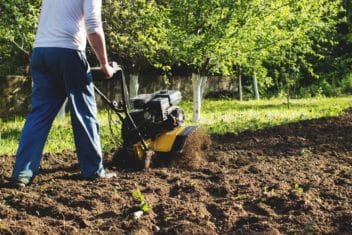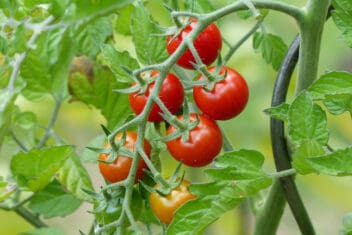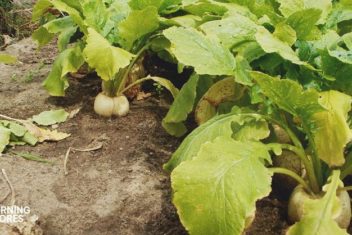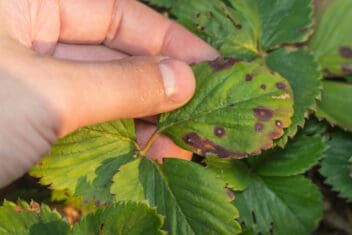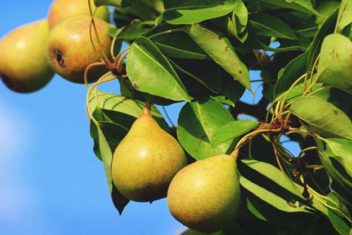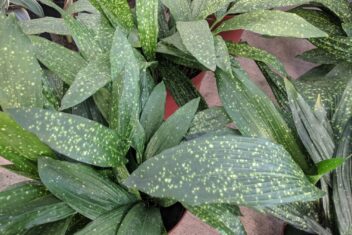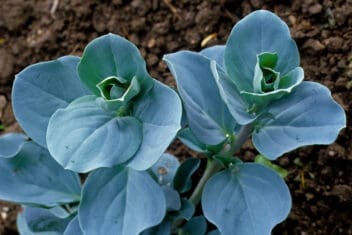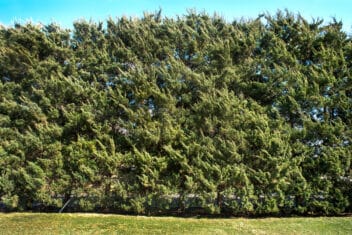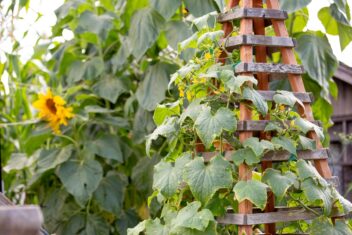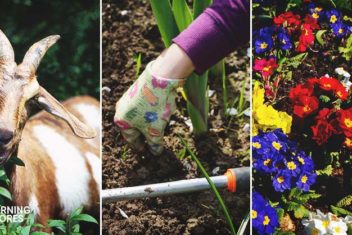What if you could grow a beautiful, productive garden in a pile of garbage? Well, you can – and contribute to a greener environment at the same time!
I’m exaggerating a bit, of course. You can’t really grow a garden in a pile of garbage. But you can grow a garden inside something that is commonly viewed as junk – an old tire.
Tire gardening is a great way to recycle old rubber tires to maximize your yields and minimize the amount of work it takes to produce a successful garden.
It’s easy to start your own tire garden – as long as you pay attention to a few tips and pieces of cautionary advice.
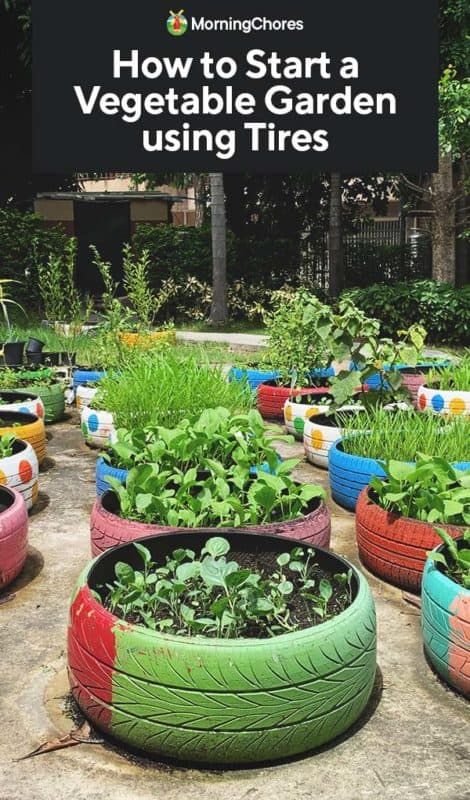
Benefits of Tire Gardening
There are plenty of benefits to tire gardening – depending on who you ask. Here are a few:
1. Recycles Old Materials
Did you know that on an annual basis, nearly 300 million tires are discarded in the United States? It is very difficult to dispose of tires, as most landfills ban them and getting rid of them legally is extremely expensive. The costs get even higher when it comes to disposing of oversized tires like those from tractors or skidders.
In many cases, it’s impossible to get rid of them at all, and they end up sitting around, wasting space.
Some people burn tires, which is not safe. It releases dangerous chemicals like polycyclic aromatic hydrocarbons, styrene, and benzene into the air, all of which are human carcinogens.
There are some ways to recycle old tires, like reusing the rubber for athletic turf or playgrounds and swings. Using tires to grow vegetables is a great way to use up these tires and it is the perfect green solution.
There are some arguments – which I’ll address in more detail below – that claim tires are filled with chemicals and metals and therefore are not safe containers. However, other studies suggest that those toxic materials are released only when tires are burned and that leaching is small, if existent at all.
2. Easy to Do
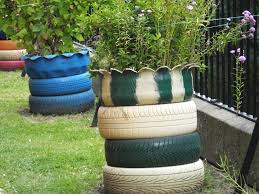
Unlike a raised bed made out of wood or stone, building a vegetable garden in a tire requires virtually no construction. You grab a tire, plop it in the garden, fill it with soil, and plant. That’s almost all there is to it!
3. Warms and Dries Soil Quickly
If you are unfortunate enough to suffer from wet, clay soil – as I do – a tire garden is a perfect solution. Not only will a tire help warm up the soil faster, providing the perfect environment for growing things like sweet potatoes and tomatoes, but it also stays drier, too. The water drains more effectively from the tire than it does from poor-quality soil.
It also allows for deeper soil if you have hard-packed ground. Clay soil is difficult for the roots of many vegetables – like carrots and potatoes – to penetrate. A tire garden is good perfect solution because you can fill it with loose, airy soil at least several feet deep.
4. Allows For Early Planting

For the same reason as mentioned above, a tire garden can be planted much sooner than crops in other areas of your garden. Not only will you not need to worry about your tire garden flooding out in a heavy rainstorm, but the soil will stay more protected from frost and intense cold, too. You may be able to move your planting up by several weeks – or more.
A piece of advice, though – even though you can plant earlier in the season, I wouldn’t recommend planting cold-hardy crops that you expect to grow all summer long in the tire garden. This applies even if you are planting in early spring. An example would be broccoli that you want to cultivate all spring, summer, and autumn long.
While the broccoli will likely do quite well in the early spring and late fall, the tire will get too warm during the hottest day of summer.
5. Less Maintenance
While your watering and fertilizing needs will likely stay about the same, you’ll find that you have much less weeding to do when it comes to your tire garden. Since the garden is elevated, it’s less likely that weed seeds will make their way into the garden and cause you additional headaches.
A tire garden is also a great idea if you are gardening in a cramped space – such as an urban garden.
How to Start a Vegetable Garden in a Tire
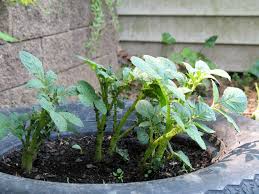
1. Find and Cut Your Tire
First, start by locating and cutting your tire. I recommend the largest tire you can find – like one from a tractor.
Check around with local service stations, farms, and other sites. You should never have to pay for the tires because people are always trying to get rid of them.
You will then want to cut the interior rim out of the tire with a saw. This will give you more planting area without an extra “lip” to contend with.
2. Prepare the Soil
Put your tire in a sunny location. Fill it with loose, fertile soil and a bit of compost. It’s going to take a lot of soil to fill your tire, so you will have to plan ahead for this.
You can sterilize the soil if you’d like. To do this, place a layer of plastic over the soil and leave it there for several weeks (I usually do this over the course of the late fall into the early spring). The plastic can actually remain on the soil if you’d like after you plant, as it can be used to create a miniature solar greenhouse.
3. Plant and Harvest as Usual
Once your tire is in place and you have filled it with soil, it’s time to plant. Your planting process, along with all other care requirements from weeding, watering, fertilizing, and harvesting will be exactly the same as they would be if you were growing in any other kind of raised bed system. It’s as simple as that!
Considerations When Gardening in Tires
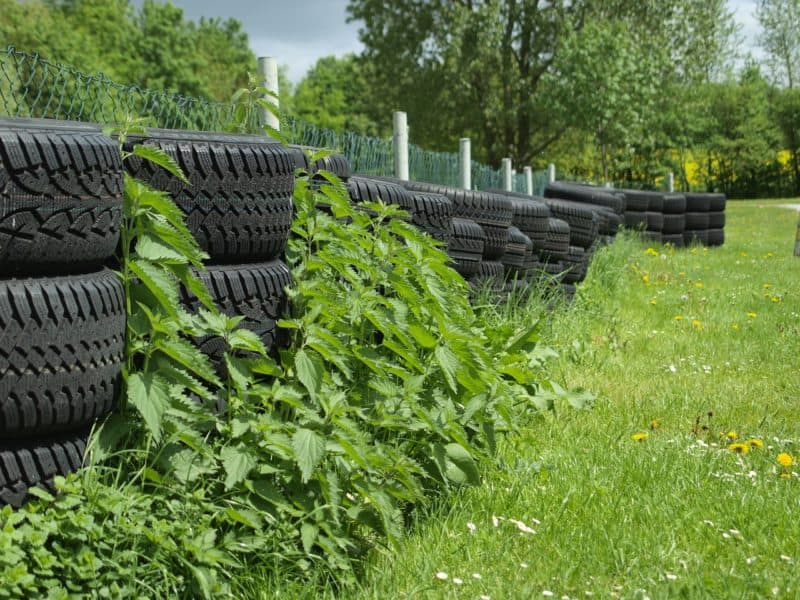
1. Safety
There are some people who will argue vehemently that growing vegetables in a tire is not safe. There’s no official word from the health or horticultural officials that rules on either side, but if you familiarize yourself with the basics, it’s really not that scary.
The one thing you do need to realize is that tires are toxic. They contain lots of metals and chemicals to which you should not expose your body to.
However, the other side of the argument is that tires are very difficult to get rid of legally. As a result, tires are building up and creating an issue with waste.
Plus, tires degrade extremely slowly. There is a certain amount of off-gassing that occurs in tires early on, but this is usually in the first year or so that the tire exists and not when you would actually be planting in it. It almost always occurs when the tire is on the car and not around your vegetables.
By the time you place the tire in your garden, it will be breaking down slowly – on more of a twenty-year basis instead of a two-month basis. Given that the time for growing vegetables is very short, and leaching is very slow, the risk from growing vegetables in tires is probably less than what you would be exposing yourself to when eating non-organic produce from the supermarket.
Of course, this hasn’t been studied on a formal basis, so it’s difficult to say whether it is definitely safe or not. If you’re really concerned about the safety issue, you could always grow flowers (which you won’t eat) in your tires.
2. Heat
As I mentioned earlier, a tire garden can simply be too warm for certain types of crops. I’ve found those that do best in the tire are the plants that like being grown in warm soil – such as tomatoes, sweet potatoes, and peppers. Try to avoid cold-hardy crops in the tire, especially if you plan on keeping it the original black color (it will absorb the heat).
3. Appearance
There are very few people who would argue that tires actually look good sitting on your front lawn. However, you don’t have to keep them looking black, bland, and unattractive. You can easily spruce up your tires with a coat or two of paint.
You can paint them to match your decor and as long as you’re only painting the outside, you really don’t have to worry about chemicals leaching into your soil.
Is a Tire Garden Right for You?
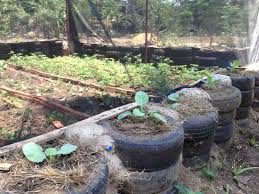
Only you can decide if a tire garden is right for you, but trust me – there are plenty of benefits to growing crops in this way. While you will want to weigh the safety and horticultural concerns before getting started, it’s an easy way to maximize your time and yields in the garden.

